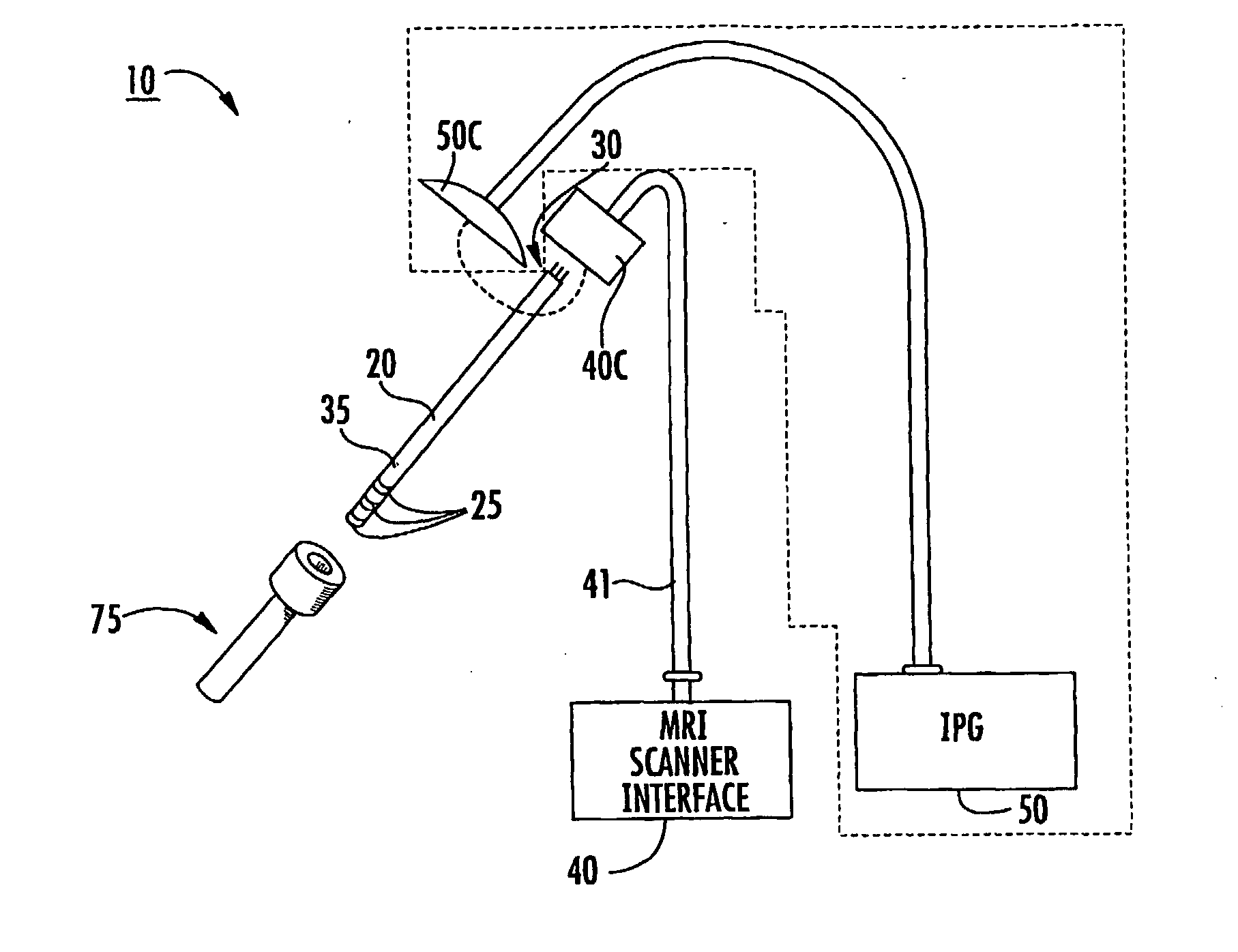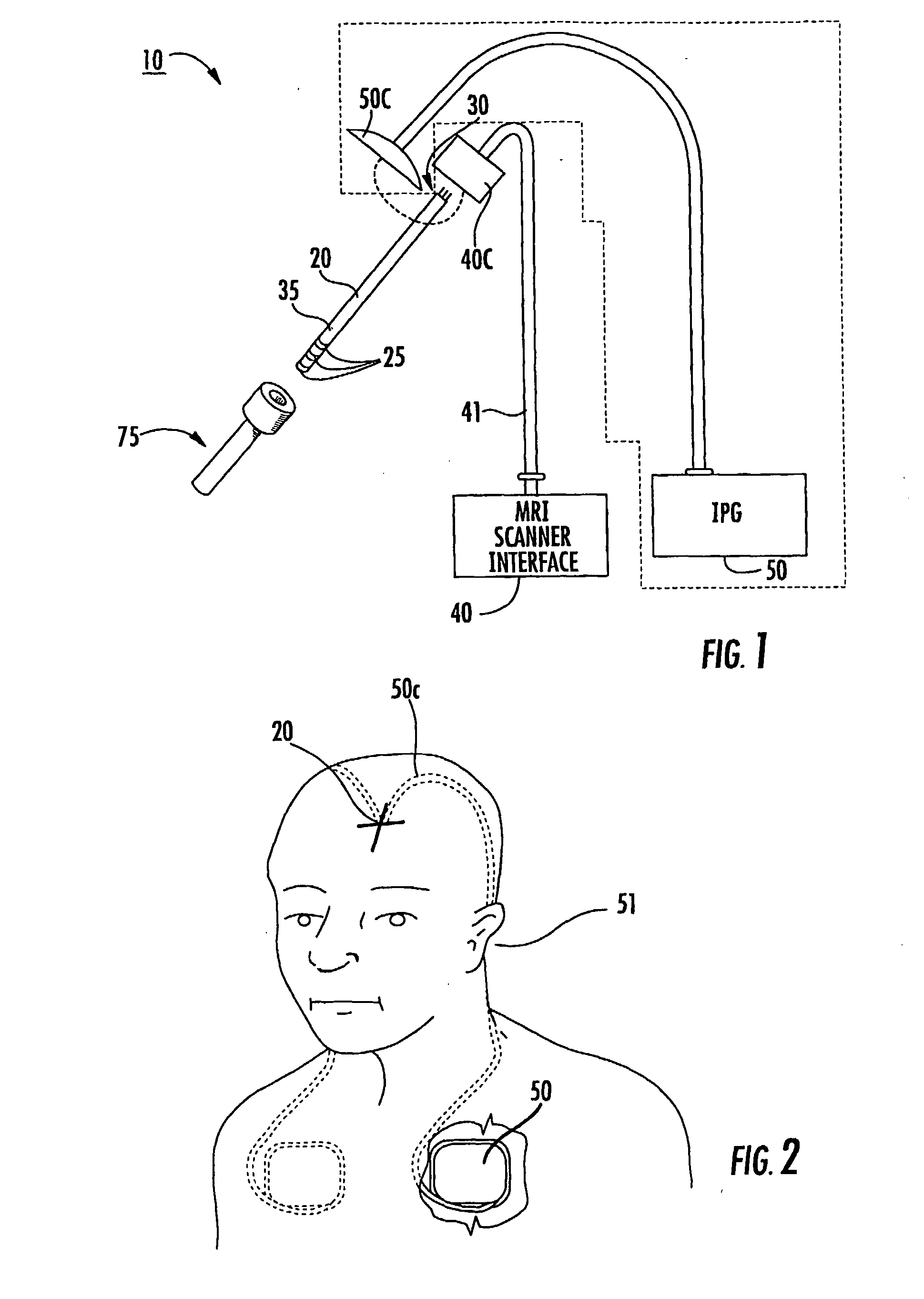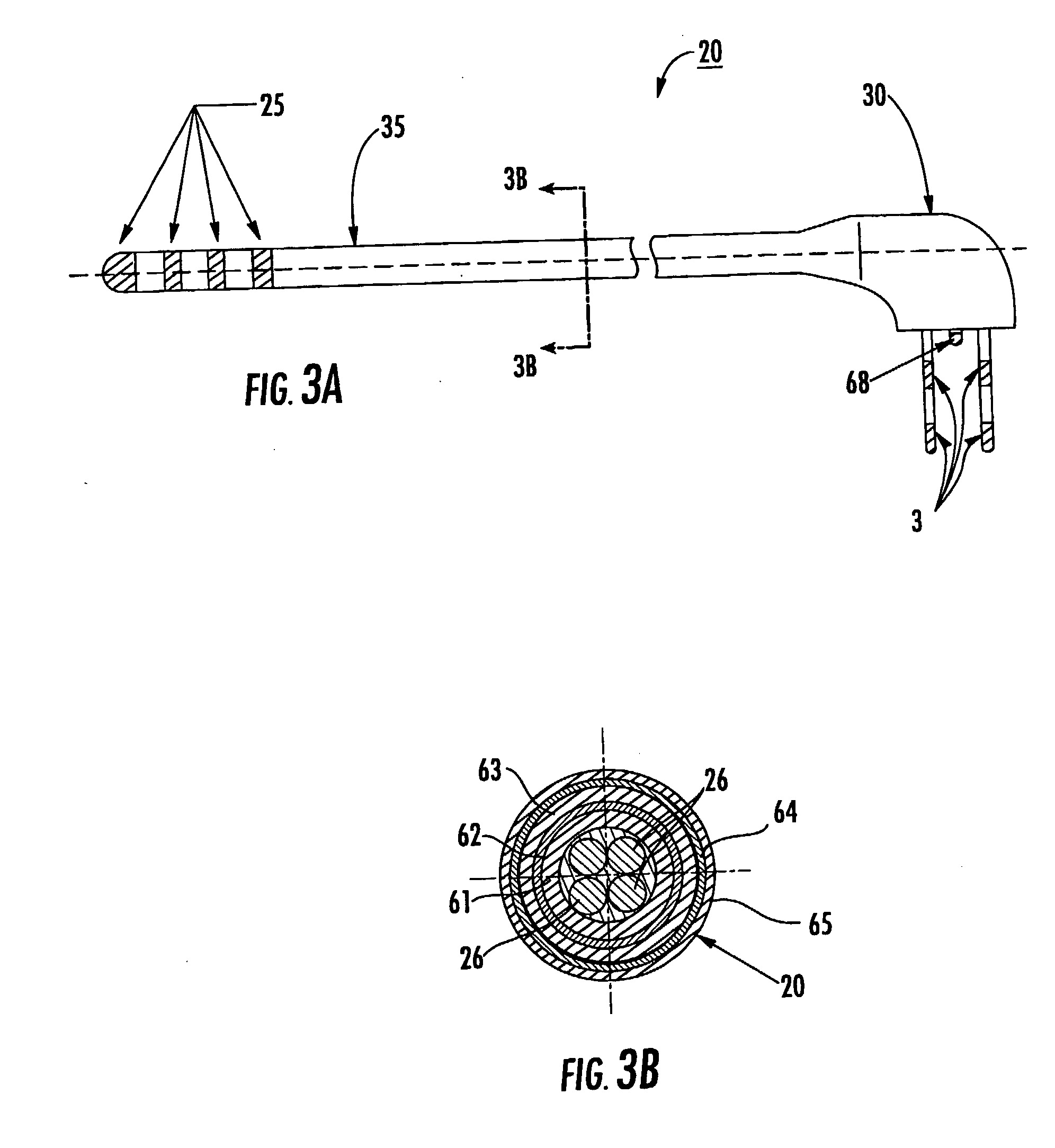Implantable Mri compatible Stimulation Leads And Antennas And Related Systems And Methods
- Summary
- Abstract
- Description
- Claims
- Application Information
AI Technical Summary
Benefits of technology
Problems solved by technology
Method used
Image
Examples
Embodiment Construction
[0010] Some embodiments of the present invention provide therapeutic lead systems. The lead systems may include RF chokes and / or induced current resistant leads. The lead systems may be implantable, MRI compatible multi-purpose lead systems configured to provide an internal MRI receive antenna and at least one stimulating electrode.
[0011] The lead can be a relatively long implantable lead having a length in the body of greater than 10 cm. The at least one electrode can be a plurality of electrodes with at least one being a recording and / or a recording and stimulating and / or ablating electrode.
[0012] The device can be a multi-purpose lead system that allows for increased precision placement using an integrated MRI receive antenna and stimulation using electrodes. The lead system can have opposing distal and proximal portions with the proximal portion configured to reside external of the subject during lead placement. In some embodiments, the proximal portion can releaseably attach ...
PUM
 Login to View More
Login to View More Abstract
Description
Claims
Application Information
 Login to View More
Login to View More - R&D
- Intellectual Property
- Life Sciences
- Materials
- Tech Scout
- Unparalleled Data Quality
- Higher Quality Content
- 60% Fewer Hallucinations
Browse by: Latest US Patents, China's latest patents, Technical Efficacy Thesaurus, Application Domain, Technology Topic, Popular Technical Reports.
© 2025 PatSnap. All rights reserved.Legal|Privacy policy|Modern Slavery Act Transparency Statement|Sitemap|About US| Contact US: help@patsnap.com



